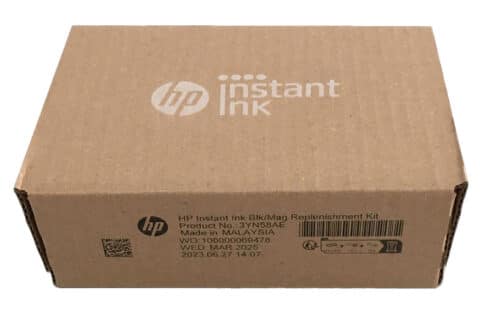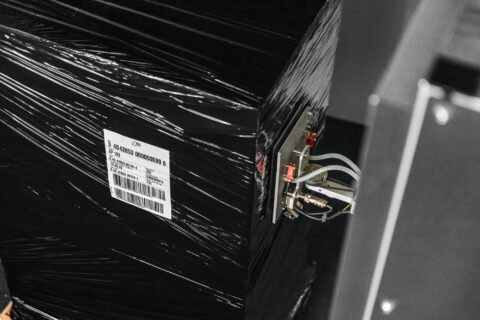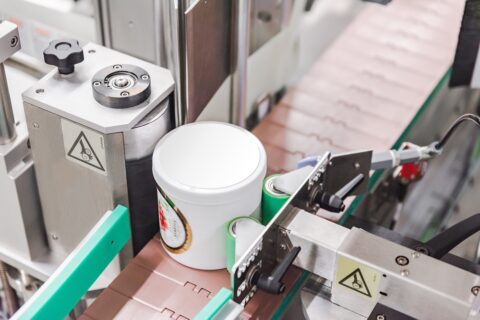Marking with labels at cold or freezing temperatures requires special label materials with selected adhesives. In a wide variety of industries, manufacturers of refrigerated products require packaging labels that are visually appealing, adhere quickly and easily, stay in place and serve their purpose for the duration of the product’s life cycle as intended.
They need labels that can withstand cold temperatures and, in particular, extreme cold, wetness, freezing and changing application conditions during the cold chain.
Marking with labels at cold temperatures

When selecting labels, many companies have to make sure that they can withstand certain temperatures, be applied easily (by a label dispenser or manually) and adhere reliably.
In certain industries there is a need to mark products and packaging with labels in cold temperatures or even at temperatures below 0°C.
Labels for cold or frozen applications are mainly required in the following industries:
- Food
- Beverages
- Chemistry
- Pharma
- Automobile
- Building
- Cosmetics
- Plastics
- Metal
- and possibly further
Labeling in the food industry

Since the correct storage temperature for food is essential to ensure food quality, labels must withstand the bonding and storage temperatures and continue to adhere reliably to the product or packaging under any stress.
Labels for cold environments and cold surfaces – what do they need?
Labels intended for cold environments and surfaces must comply with a series of requirements, including the following:
- Regulations must be observed.
- The adhesive must adhere despite a gradient between minimum and maximum temperature.
- The adhesive must be food safe (in case it comes into contact with food).
- The labels must be able to withstand the annealing process and must not peel or fall off during transportation from the store to the home.
- The labels must meet necessary durability and remain intact despite cold.
- They must withstand temperatures, humidity and repeated product treatment.
- They must withstand a possible condensate process.
- They must guarantee professional adhesion in the passage of the cold chain.
Problems when using unsuitable label materials:
Several problems may arise if unsuitable label materials are used to manufacture labels intended for cold environments and surfaces. These include the following:
- When labeling frozen food, the labels can become stiff and fall off in the freezer.
- The labels adhere in the refrigerated area, but are not designed for a warm, hot and humid outdoor area.
- The labels may peel or fall off during transportation from the store to your home.
- In beverage labeling, bottles often move from place to place, causing condensation (e.g. rapid temperature difference from refrigerator to warm car). The label no longer adheres reliably to the substrate.
The right label material does the job:
Labels intended for cold environments and surfaces and manufactured with the right materials have several advantages, including the following:
- Labels for the cold or frozen food sector can be used for a wide range of packaging types: plastic films, LDPE, HDPE, PP and PET, including cardboard.
- They possess water resistant properties that preserve the adhesive. The surface material retains printed image even when exposed to water or moisture.
- The material surface ensures high printing speed using thermal transfer printing (subsequent printing on site with variable data)
- The label material is also available as direct thermal materials for direct thermal printing
- Adaptation to temperatures below zero
- An eye-catching label design ensures high shelf appeal
- Communication of nutritional information and all necessary product information
Labels must adhere securely during the entire cold chain
Not only the marking with labels after the manufacturing process is a task for the manufacturers. They must also ensure that the labels continue to adhere reliably during the cold chain and at the subsequent point of sale, and that they do not lose any of their quality in terms of adhesive performance and appearance.
What is a cold chain?
The cold chain refers to the management of the temperature of perishable products. It ensures quality and safety from the time of slaughter or harvest, through the distribution chain, to the end consumer.
Where must cold chains be assured?
In the production:
- Manufacturing industry
- Packaging systems
- Pre-cooling
In logistics:
- Refrigerated trucks and railroad wagons
- Storage
- Cold store
- Distribution centers
- Means of transport
At the points of sale:
- Grocery stores
- Warehouses
Why is the cold chain important?
The cold chain ensures that perishable products arrive safely and maintain a consistently high quality at the point of consumption. If the product is not kept at the correct temperature level throughout the cold chain, negative results can occur, including the following:
- Germs, bacteria and salmonella are formed
- The product spoils quickly
- Financial loss for the producer and, if applicable, for all participants in the supply chain
- Financial loss for the consumer
Product labeling under cold conditions
Weber Marking Systems is specialized in providing a suitable total package for product marking in any industry. Please do not hesitate to contact us if you require individual advice!
Get in touch with our marking and labeling experts
- Food Labels – How to Print and Apply
- Marking packaging alongside the production line
- Sustainable Product Marking and Labeling
- 7 Smart Ways to Reduce Labeling Costs
- Labeling more efficiently – 5 future-proof solutions
- How to minimize downtime during batch changeover
- Marking on cardboards: Labeling vs. direct printing
- How variable data labels can boost your business


















